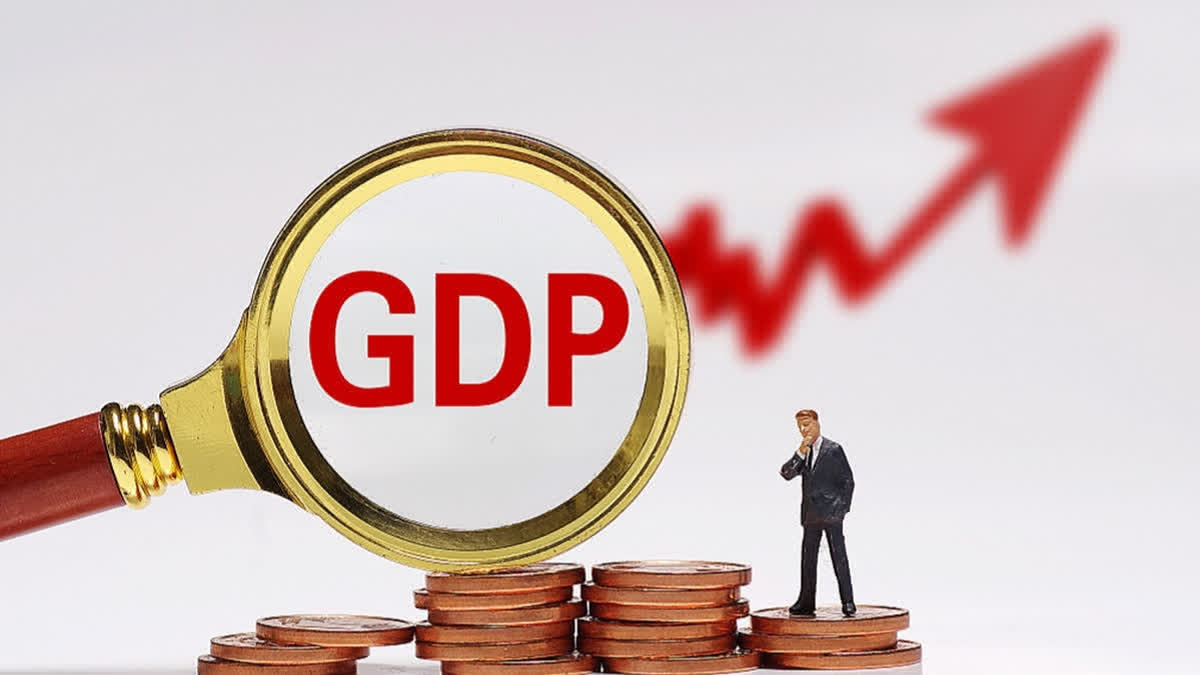Hyderabad: India's goal is to become a developed country by 2047 and for this, RBI has clarified that GDP growth has to continue for the next few years. However, it remains to be seen will our nation's goal pursuit go in that direction. Statistics show that the world's population has reached 800 crore by August this year and Gross Domestic Product (GDP) measures the economic conditions of people living in rich and developing countries. While the total value of goods and services produced in a country in a year is considered as GDP for that year.
The IMF and the World Bank have estimated the world GDP at 112 trillion dollars in 2022-23. Due to this, the per capita income of the people of the world is calculated as 14,000 dollars per year. However, it would be a mistake to assume that the per capita income is at the same level in all countries.
India has surpassed China in population, but India's per capita income is only about $2,450. However, SBI's research report estimates per capita income growth is encouraging. The top 10 countries in the world in terms of GDP account for the largest share of international trade. Although the ranks of these 10 countries vary, overall it is these countries that rule the world economy.
Share of industrial and service sectors...
America has the highest GDP in the world with a per capita income of 80,000 dollars, but the population of the country is only 33 crore. With a population of 12.5 crore, Japan's per capita income is $33,815. With a population of over 140 million, China's per capita income is $13,721.
These are the countries occupying the first three positions in the world in terms of GDP. Their economies are highly diversified. Heavy industries, electronics, healthcare, finance, advanced technology, extensive infrastructure, a positive business environment and educated, well-trained human resources are keeping these three countries at the top.
Economists predict that India will emerge as the fourth-largest economy in the world in the next two years. India has already occupied the third position in the number of seed companies. Today there are around 84,000 government-recognised seed companies.
In developed countries, the share of the agriculture sector in GDP is low, while the share of industry and service sectors is high. The share of the agriculture sector in India's GDP is 20.2 per cent, while the world average is 6.8 per cent.
The status of the Indian agriculture sector is very poor. This is evidenced by the increasing number of farmer suicides in the country. Farmers of all categories, including those who grow commercial crops, have to agitate from time to time for remunerative prices.
The share of the agriculture sector in India's GDP is gradually decreasing. Foreign buyers are keen on our crop yields. While the farmers are getting minimum prices, the prices of vegetables and onions are skyrocketing and giving profits to middlemen.
The share of the industrial sector in world GDP is on average 30 per cent. In India, it is only 24.6 per cent. While the industrial sector contributes 70 per cent to Germany's GDP, the service sector contributes 71 per cent in Britain. If the share of the service sector in world GDP is 63 per cent, it is only 54.8 per cent in India. Like the top developed countries in the world, India also needs to increase its share of industrial and service sectors.
With the growth of exports...
Today, China is the world's largest exporter of meat, having devoted most of its attention to the industrial sector. As a result, employment opportunities in China have increased exponentially.
India, which has a large population, should learn lessons from this. In China, the government has invested heavily in infrastructure and technology. Private investments are supporting the development of industrial and service sectors.
Like China, there is a need to establish huge industries in the private sector in India. Indian corporates have not been able to keep pace in growing into world-class multinationals and could not create significant international brands.
In America, huge multinational companies like Apple, Microsoft and Amazon are flourishing. Expanded business and production activities to other countries. Japanese companies like Toyota, Honda and Mitsubishi are world-famous. It may be noted that South Korea's Samsung is a global company.
While China's cheap manufactured goods have become a boon to low-income countries. That is why today China's international trade is reaching peaks. The countries, which import cigarette lighters at the price of Rs 2 from China, are selling them at Rs 10 in their countries.
India needs to reach the point where it can export various types of goods like pharmaceuticals, IT products as well as specialty chemicals and electronics. With the growth of exports, the per capita income of the people increases, along with the GDP.
Production should grow...
India has a large population of the poor. Hence, consumption of goods is low. As a result, production is limited. Because of that job opportunities are very limited. Valuable funds that should be spent on increasing the production of goods and services are being spent on free gifts for electoral gains.
Instead of this, production should be increased so that employment would be generated and at the same time, business opportunities would grow. Only then, every family will get a good income, savings will increase and the country's economy will speed up.



